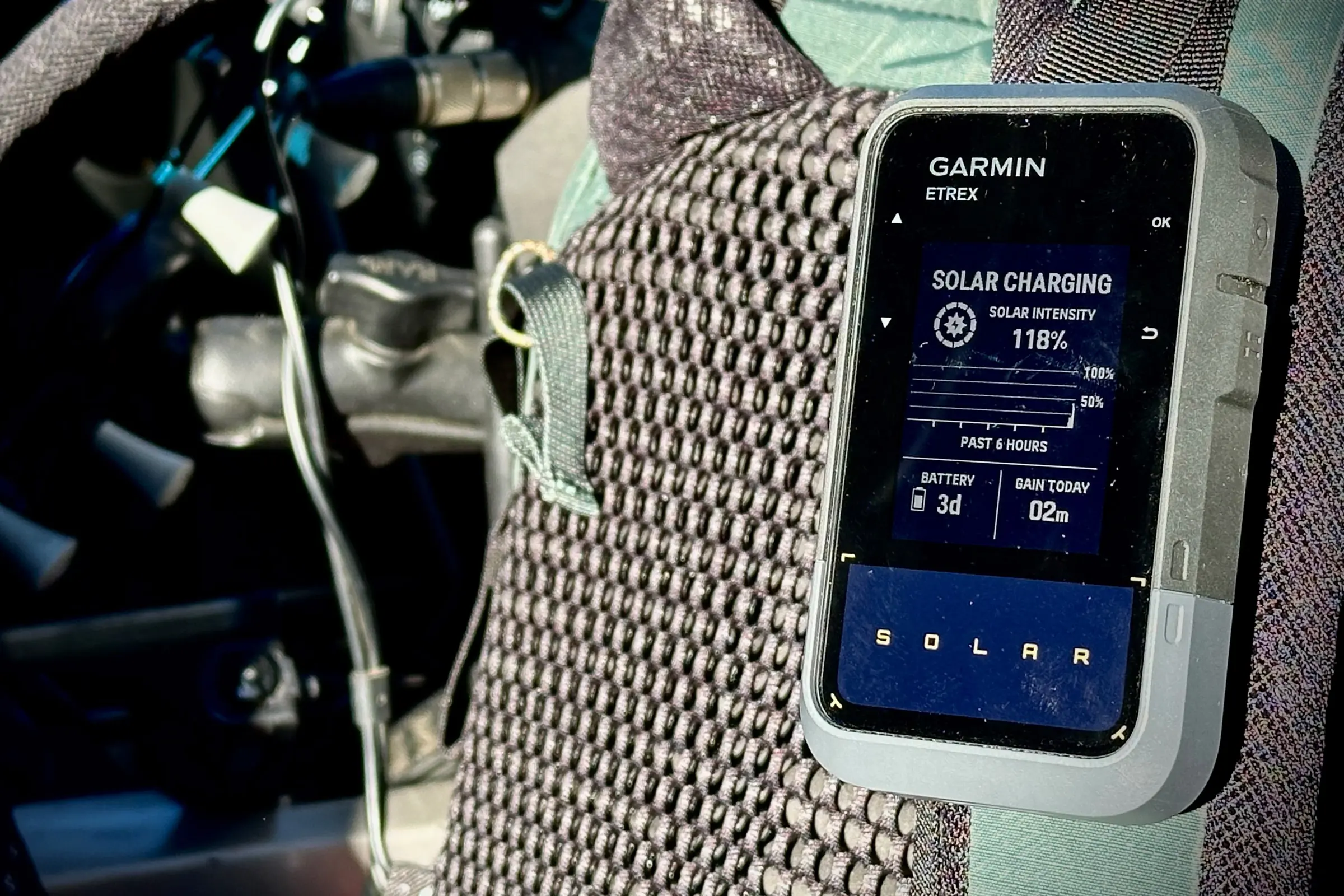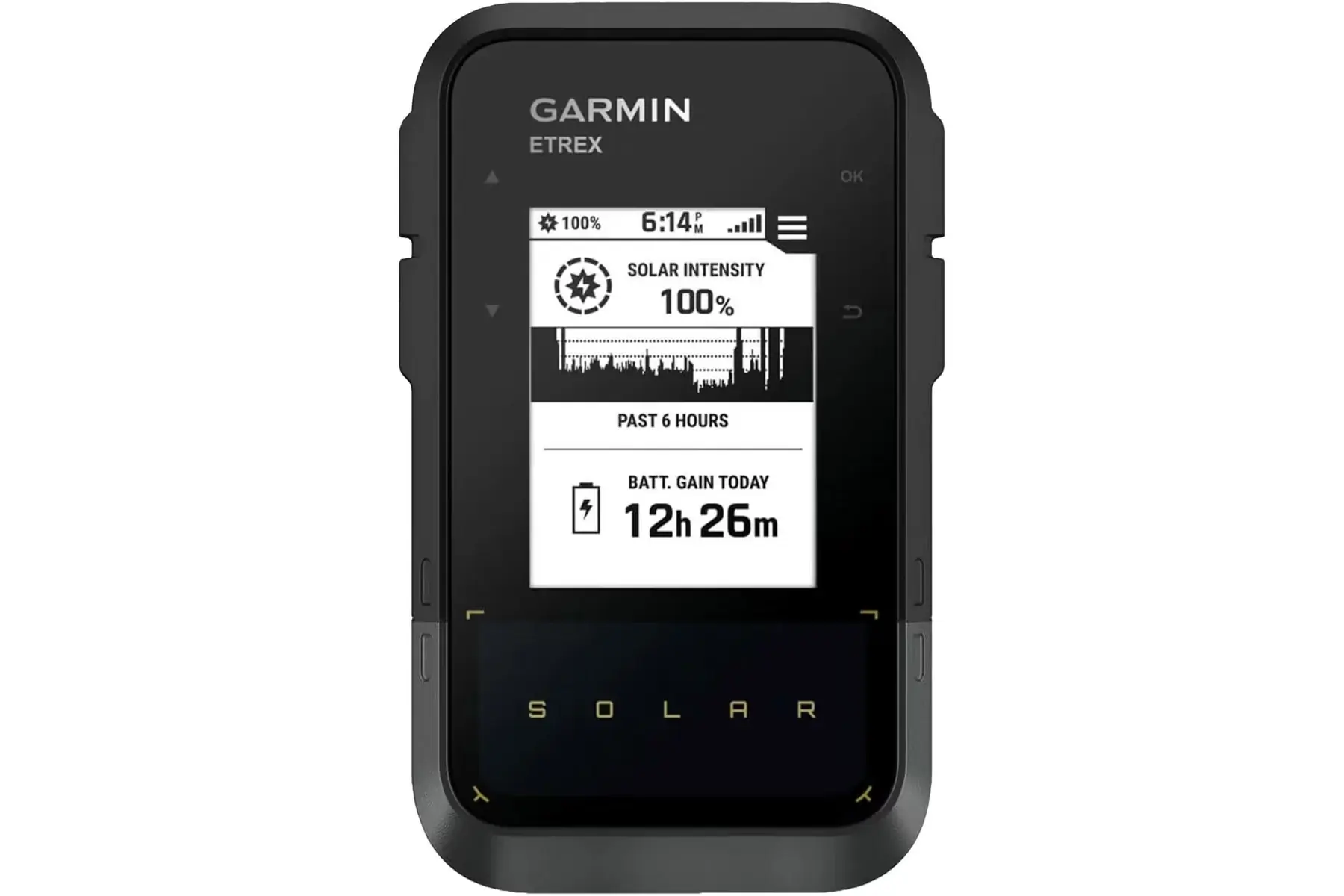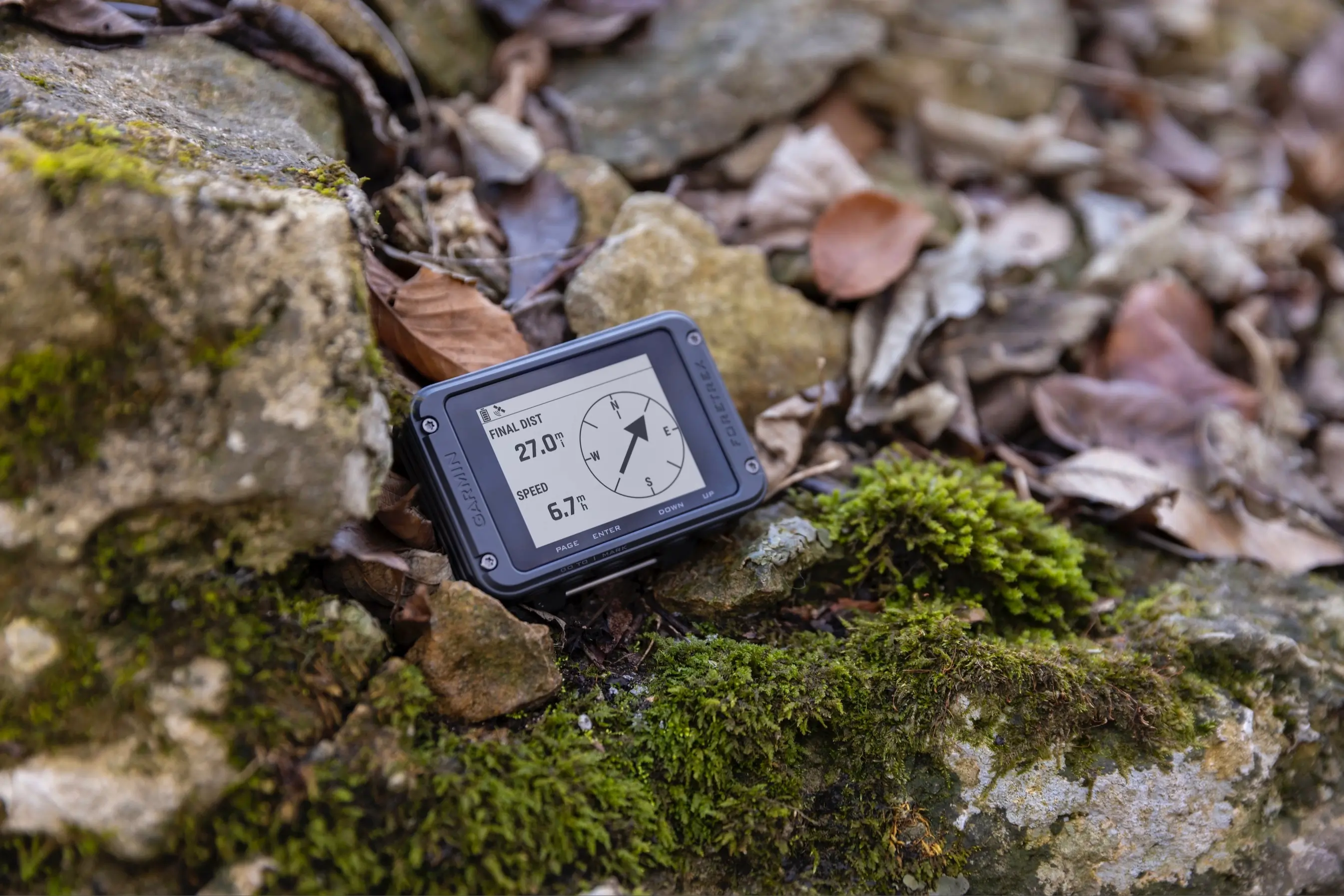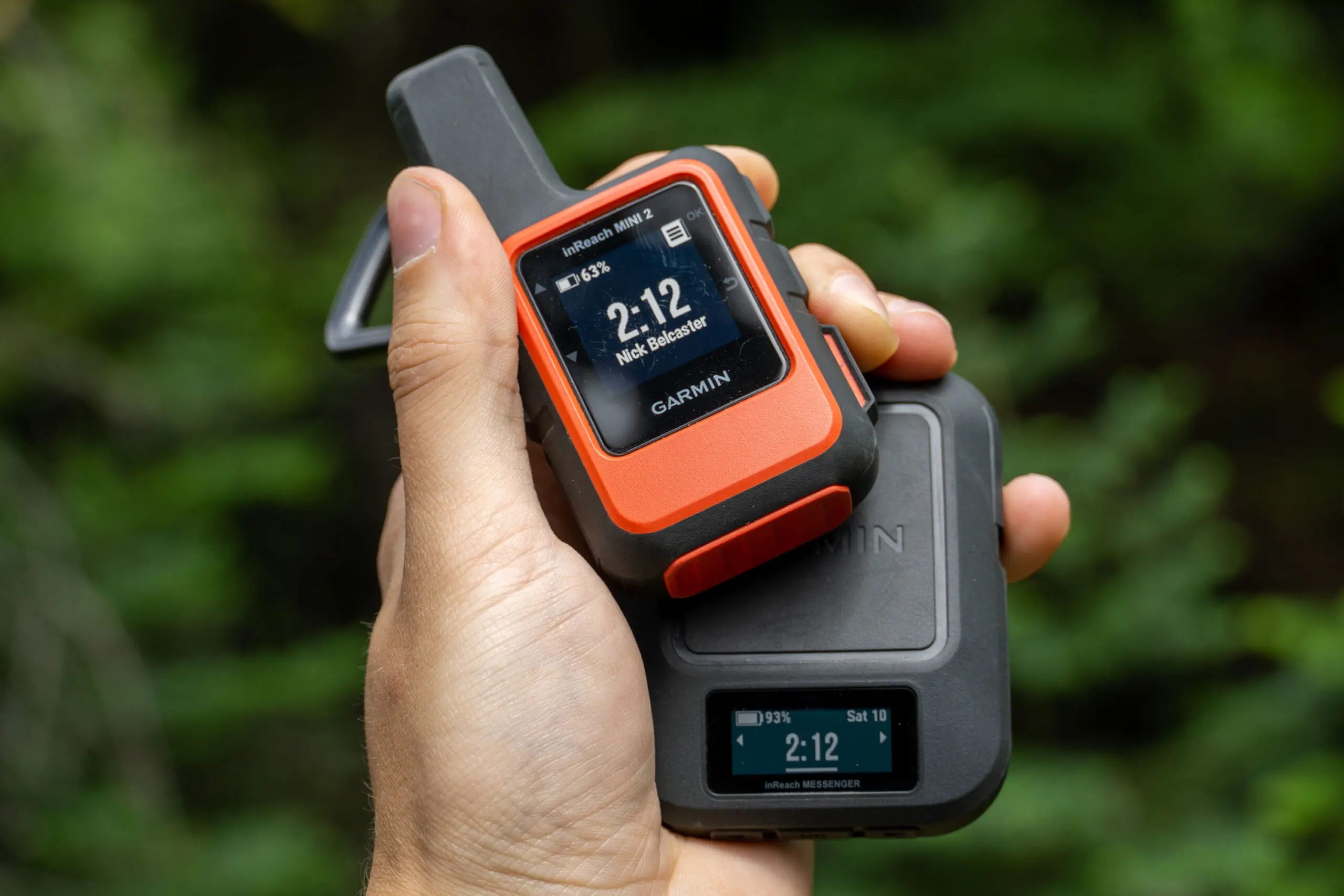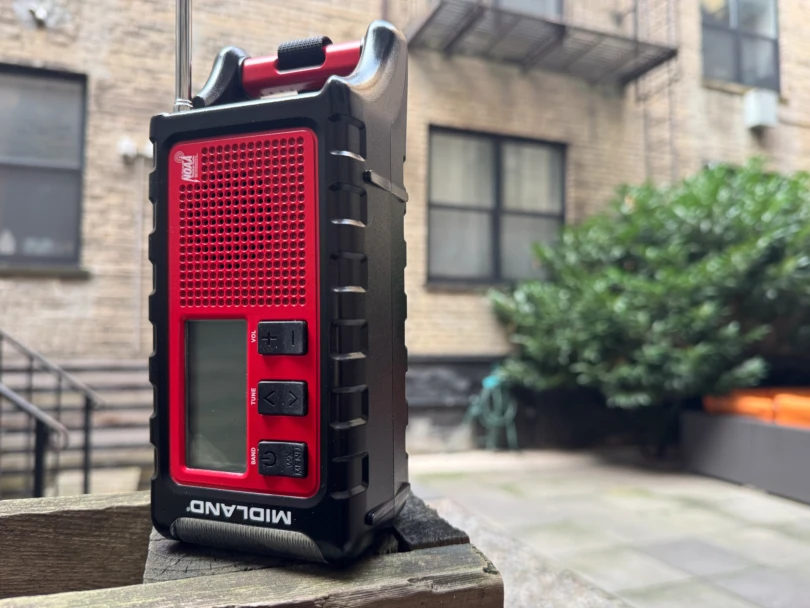I had no intention of starting my review of the new Garmin eTrex Solar off this way. But there it is on the dash of my truck, soaking up juice that’s bouncing off my shades as I drive home this morning, and frankly, I’m a little blown away. I’ve used a lot of solar products over the years and I don’t think I’ve ever used one that is this efficient.
But I digress. In the last month, this little GPS unit has become part of my daily life. I take it everywhere I go, and have even created a custom mount for it in my 4Runner. I make it a point to import and export routes and waypoints randomly throughout the day. And, ultimately, I have come to appreciate the fact that the unit requires me to put in a little work to get what I need from it.
That all said, if you pay attention to product reviews (and we do), it’s what’s been baked into the eTrex Solar ($250) that has been given as much attention as what has been left out of this minimal device. So, the following isn’t just going to be an informed review of my experience with the unit, but an opportunity to debunk some of the lingering questions out there.
In short: The Garmin eTrex Solar is a stripped-down, solar-powered handheld GPS unit that gives you easy-to-read information in an easy-to-use package. It also has multiband GPS, which provides pinpoint accuracy and staves off obsolescence.
To read more on the spectrum of GPS-enabled devices today, check out GearJunkie’s Best Handheld GPS Devices guide for the bird’s-eye view.
-
Satellite Reception
8.0
-
Feature Set
8.0
-
Battery Life
8.0
-
Durability
8.0
- Battery Life: 200 hours in standard mode; up to 1,800 hours in expedition mode; unlimited with solar
- Battery Type: Internal rechargeable lithium ion
- Weight: 5 oz.
- Memory: 28 MB
- Screen Size: 2.2”
- Rating: IPX7
- Connectivity: USB-C / Bluetooth
- Sensors: Multi-band GPS, GLONASS, Galileo, QZSS, Beidou, IRNSS + Compass
Pros
- Solar cells in screen powers device indefinitely in direct sunlight
- Multi-band GPS reception
- Modern USB-C charging
- Affordable pricing
- Simple feature set executed well
Cons
- Notifications don’t go away on their own
- Black and white screen isn't the nicest to use
Garmin eTrex Solar Review
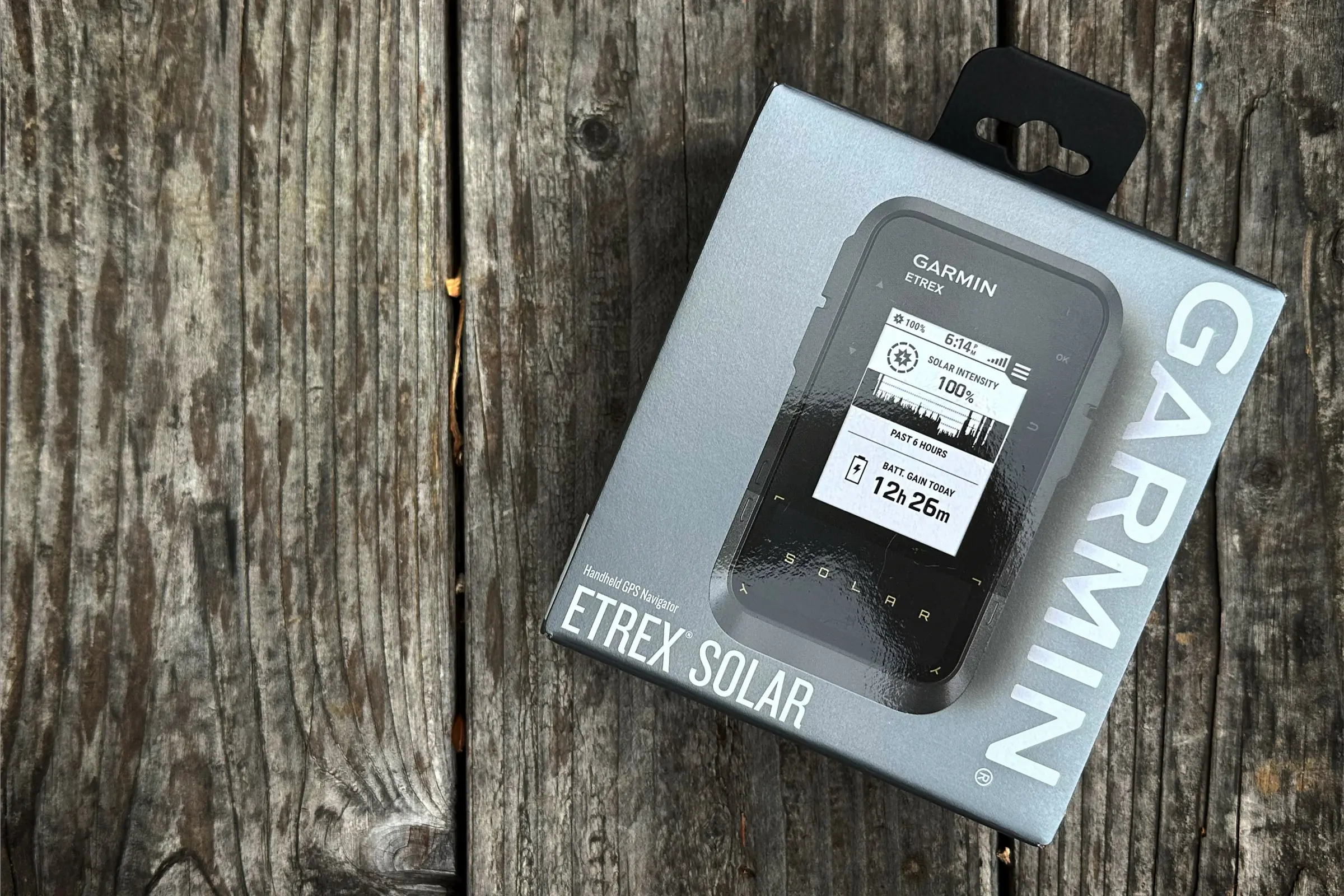
So, Another GPS?
Not quite. The eTrex Solar is a simple, stripped-down, solar-powered GPS handheld. Designed for the outdoor enthusiast and arriving hot on the heels of the newer eTrex SE, the unit allows you to collect waypoints, create routes, and access them with ease through a series of simple yet specific menus. It is, in short, everything you could ever want in a GPS unit without all of the superfluous bells and whistles of higher-end units.
But the real shining star (no pun intended here) is the ability to solar charge the unit. This can give you unlimited battery power no matter the mode you’re operating in. And while I’ve yet to reach unlimited hours with the unit, initial testing shows great promise. With a simple screen, minimal processing power, and limited gizmos, the device simply sips juice, and the solar panel can easily keep it topped off for extended expeditions.
Rounding out the impressive features and benefits of the eTrex Solar is its multiband satellite capabilities. While typically a functionality reserved for high-end GPS-enabled devices, this tech has been trickling down to the masses, and by being able to connect to different satellite frequencies, you can be assured that your position is accurate.
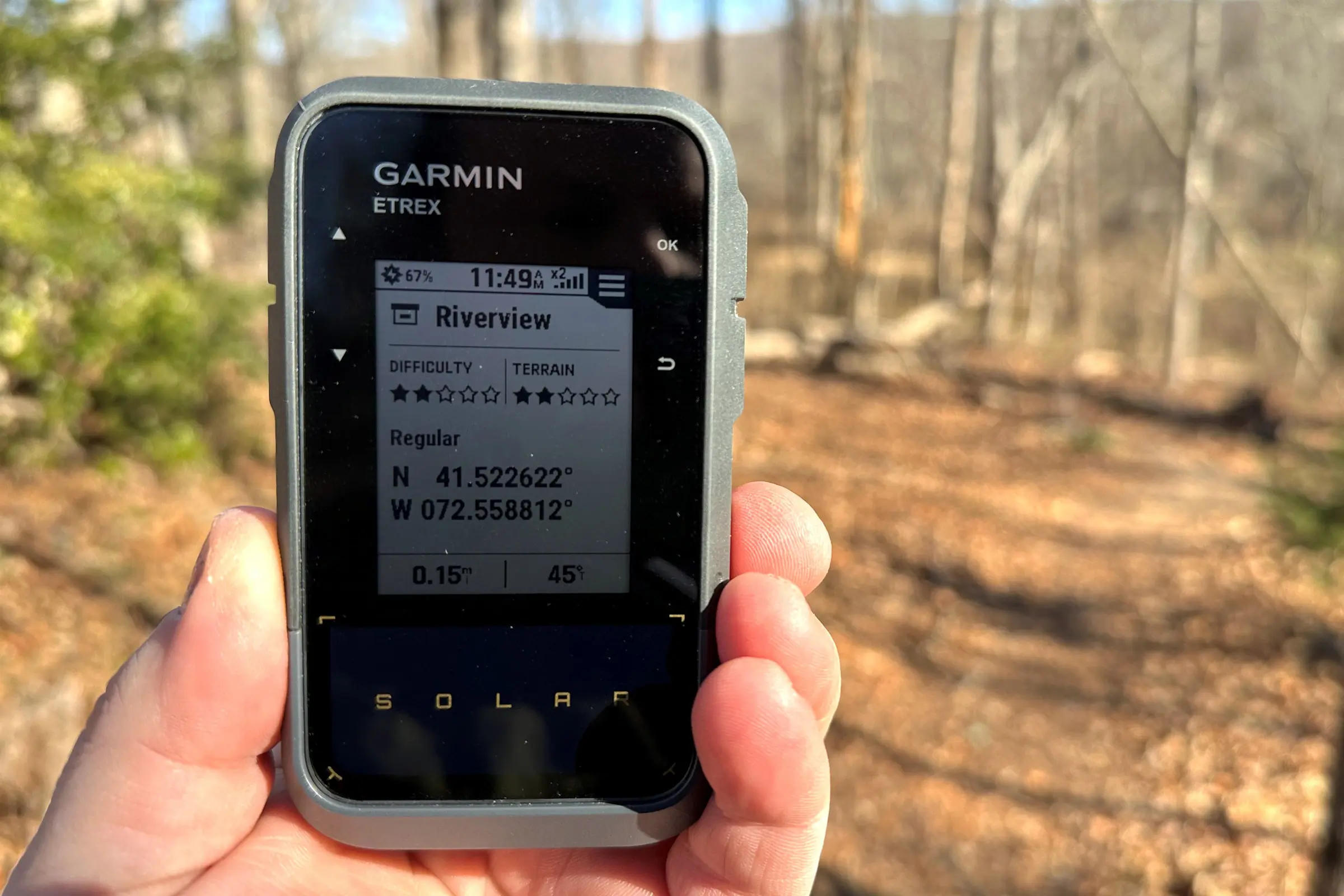



The eTrex Solar also has a dedicated menu item for geocaching, which it can do natively or by pairing the unit with your smartphone and using the Geocaching app. This makes the eTrex Solar a valuable tool for you to take in the outdoors on your own, or when spending time having fun with the whole family.
Pairing the eTrex Solar with your smartphone allows you to access expanded features such as phone notifications as well as weather and sunrise and sunset times. It also allows you to plan your trips ahead of time.
This can be done through the Garmin Explore app which also makes managing waypoints and routes easier without complicating the operating system. The Explore app also allows you to interact with navigation apps like Gaia GPS to import and export information.
What It’s Not
I generally don’t read reviews about products I’m testing. I also avoid message boards as much as possible. But I was looking up a couple of technical specifications on the eTrex Solar and found myself reading posts and reviews that just didn’t line up with any of the marketing materials from Garmin about the eTrex Solar. The negative comments were spreading like wildfire. What was the deal?
A lot of people assumed the eTrex Solar and its disposable battery-dependent partner — the eTrex SE — were going to be successors to the eTrex 22x or 32x. At least in terms of having a color screen and what the operating system was going to be.
But when the SE launched back in March and then the Solar in November, it became glaringly obvious that these were more like the eTrex 10 — a barebones unit that focused simply on doing what GPS devices do best: navigate.
That said, it’s true that the eTrex Solar does not have a color screen or feature turn-by-turn directions. Yes, routes and waypoints can be imported to it, but you cannot upload custom maps or TopoActive maps to it. Additionally, there isn’t a joystick to navigate through the menus. Instead, it has a multi-button approach that people who’ve used the Foretrex series will recognize.
But the longer I used it, the more I realized that it’s got everything I could ever want in a GPS unit, sans goofy fishing calendars or integrated flashlights. Do you have a place you want to go to? It’ll take you there. Want to know how to get home? The eTrex Solar has you covered. And sometimes that’s all you need.
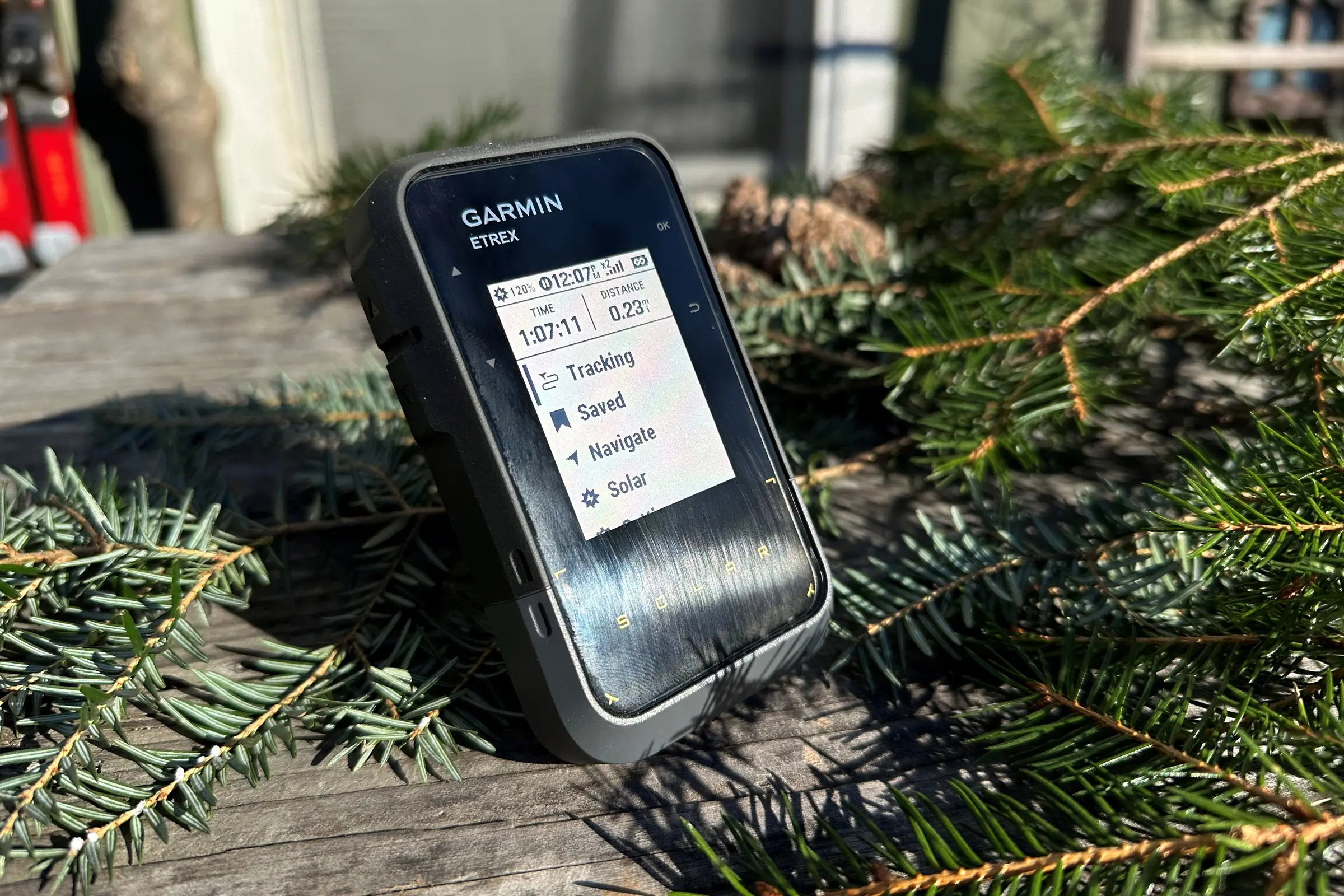



Sips of Sunshine — An Expedition-Ready Solar System
Having tested a lot of outdoor gear over the years, I’m more than willing to admit that some solar-equipped gear is a pain in the ass. You have to have panels angled just the right way to get a decent amount of solar power pulled in. In the end, it can be more of a struggle than a benefit.
That’s not the case with the eTrex Solar. The first time I walked out the door with the unit into the sun, I was pulling in 112% of solar intensity. That climbed up to 142% once I positioned it and let it be.
Overall, on average, when you’re walking about with a clear shot to the sky, you can expect to net around 70-80%. The number is always fluctuating, but the point here is that the eTrex Solar’s receptors are wicked sensitive and thereby effective. This is if the unit is on or off. Yes, that’s right — this little goober is taking sips of sunshine even when it’s powered down.
In terms of gains based on that efficacy, I picked up 19 minutes of battery life after 10 minutes of leaving the eTrex Solar in the sun. Garmin states that 1 hour of 100% solar intensity will gain 2.5 hours of battery life. The best way to achieve those kinds of results is obviously by keeping the unit in one place, but by all means — charge where you can and when you can.
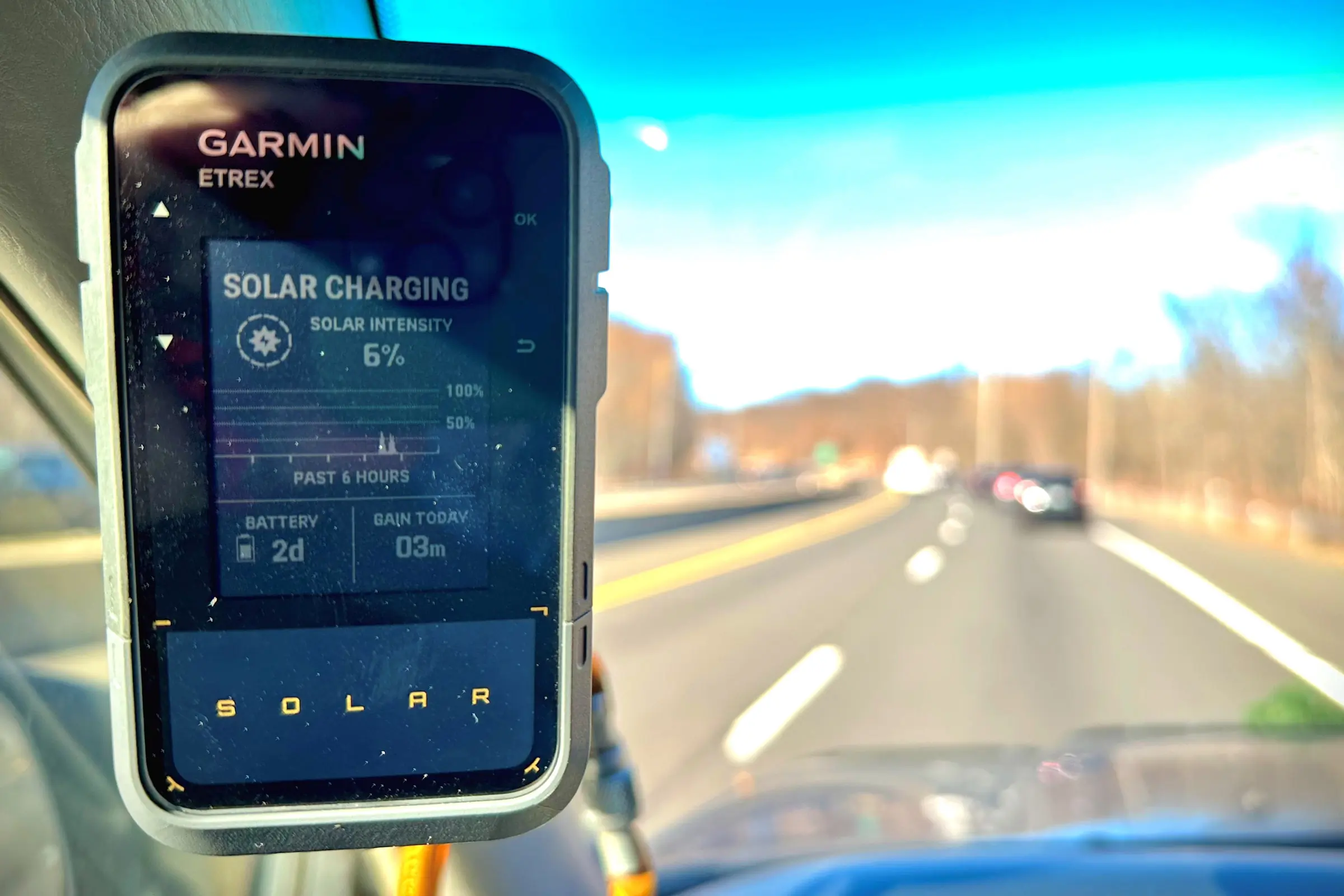



That being said, if someone were to ask me if the solar feature is worth the $100 upcharge from the Garmin eTrex SE, I would have to tell them yes. With the solar feature, you have unlimited hours of usage. If there’s no sun, don’t worry — you have at least 200 hours of battery life. Which, not for nothing, is still more than the 168 hours you’ll get with the eTrex SE.
Now, is that $100 worth it for everyone? I like to know that I don’t need to rely on batteries for everything. I also like to know that if I pull something out of my gear closet, I don’t automatically need to charge it. Don’t forget, you also get the multiband GPS feature that the SE model doesn’t have.
In my life, I don’t know if I will ever need something that lasts more than a week without a charge. But I know there are plenty of people out there who can benefit from this feature. You need to determine if that’s you.
Battery Life
Across its different product lines, Garmin has been pushing extended battery lives in recent years. With the ever-growing popularity of the Apple Watch that can only last a couple of days, it makes a lot of sense for Garmin to tune their watches to run nearly a month on a single charge. It has also made it a point to point out that its latest addition to its Foretrex line has more than double the battery life of its predecessor.
The eTrex Solar is Garmin’s first solar-powered handheld GPS device* — but it’s not the first solar-powered product. It’s been using solar power in watches to improve battery life for the last few years. Being that they are a wearable device, this eliminates the burden of needing downtime to charge. Adding this functionality to the eTrex provides the same thing, which ultimately enhances ease of use, reliability, and dependability.
But then you think about a handheld GPS like the Montana 700i ($700). That thing comes off like the holy grail of GPS units but only has a battery life of 18 hours. I guess this leaves the door open for new products, but it’s a bit of a head-scratcher. At $450 more than the eTrex Solar, you would think it would be one of the first handhelds to get solar and multiband GPS.
Again, I’m not here to speculate why Garmin does what it does. I continue to enjoy its products.
*The Edge 540 Solar and 840 Solar are bike computers.
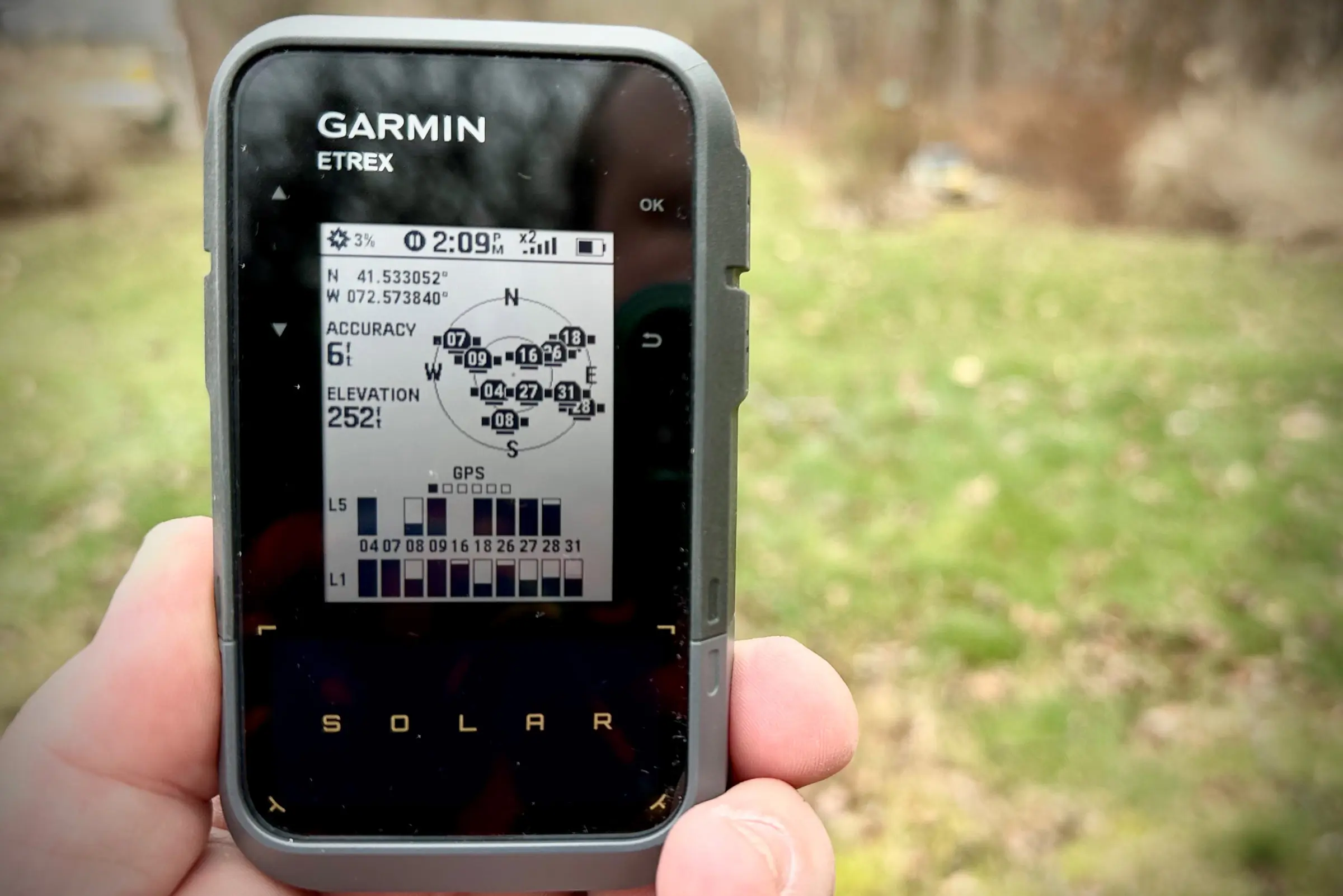



Multiband GPS Reception
Space Force (I still can’t believe we named it that) is responsible for the 24 satellites that make up our GPS sat-nav constellation. They do everything from keeping those big tin cans up and running to replacing them as they either wear out or become obsolete. At all times, we have 24 satellites active in space, as well as some older birds from earlier generations.
This is where the whole idea behind multiband GPS comes into focus. For years, GPS has been relying on two frequencies of GPS — L1 (Civilian) and L2 (Military). In 2021, it started using the L5 band for civilian use. We currently have 16 satellites in orbit using the L5 frequency with the plan to have all 24 using L5 by 2027.
A multiband GPS device, like the eTrex Solar, can utilize both the L1 and L5 frequencies to give the unit an undeniably reliable and accurate connection. This means no jumping and lag — what you see on the screen is as real as it gets. It also means there’s a lower propensity for losing a signal and a higher propensity for acquiring one.
This capability also minimizes issues with interference which can occur if you go inside a building, are under a forest canopy, in a canyon, etc. I live out in the woods and I had an accuracy of 6 feet with the eTrex Solar. Most people are happy if they get 16 feet, which is the standard with GPS-enabled cellular devices.
When you consider the fact that the eTrex Solar is both solar-powered and multiband, it creates a beautiful balance between desirable and affordable.
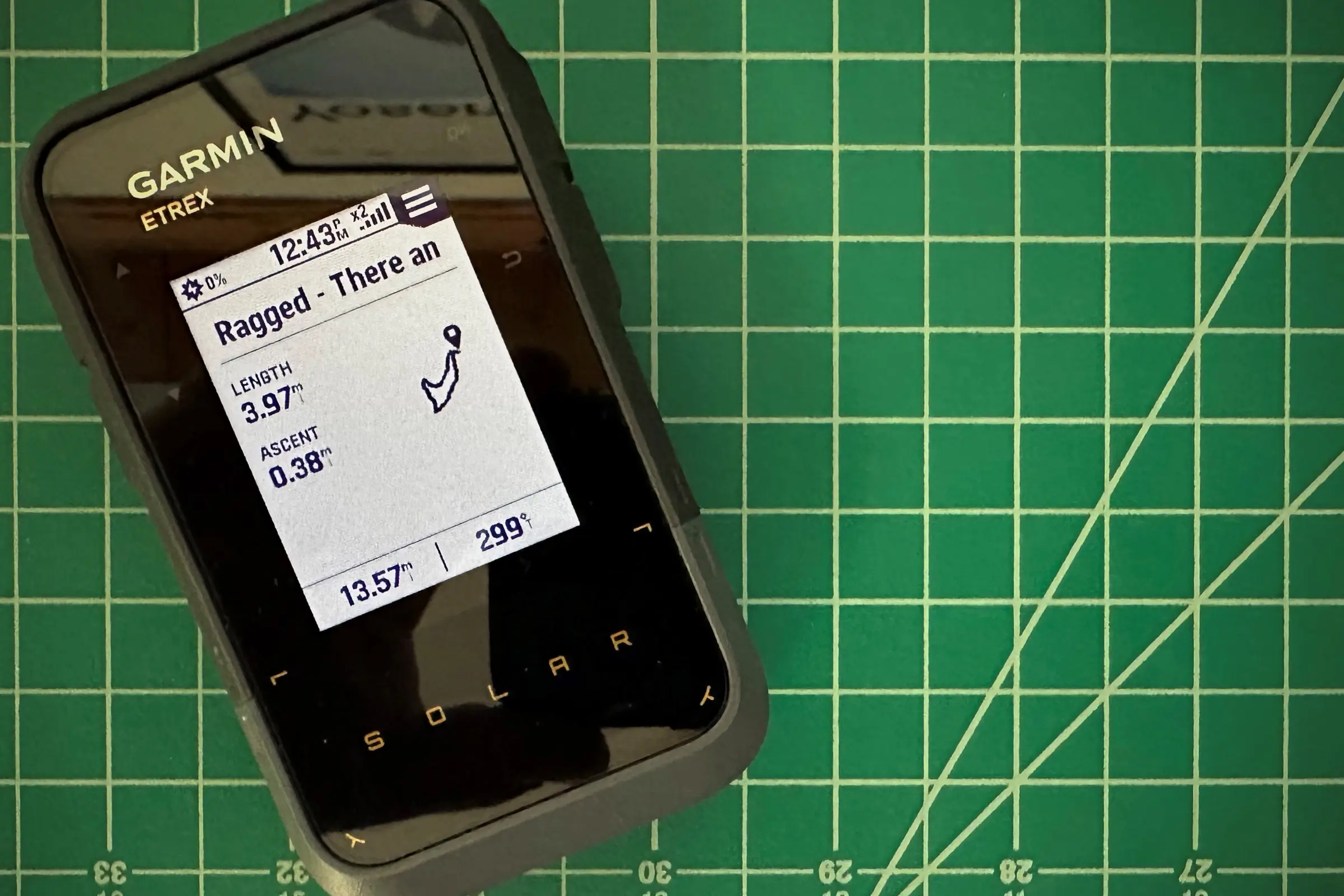



Importing and Exporting Routes & Waypoints
Out of the box, the eTrex Solar has a simple, city-oriented base map baked in. This is a benefit, as it allows you to keep the unit uncluttered from the get-go. But that doesn’t mean you can’t add routes and waypoints to it, or export them to another database.
I’ve been using Gaia GPS for the last 3 years. It’s a powerful route-making application that allows you to share the routes you make as well as access the information you save offline. I originally got into it to map out the unmarked off-roading trails where I live and at a place I like to get weird at up in Vermont. Then it grew to be my place to track my adventures.
Other popular mapping apps, such as CalTopo, work with the eTrex Solar as well (really any that can export GPX tracks will work also). The process can be a little tenuous at first, but once you get the hang of it, you’ll find yourself importing and exporting with ease. The benefit here is the ability to load up previously tracked routes from other users onto the eTrex, which you can use without your phone for a more lo-fi hiking experience.
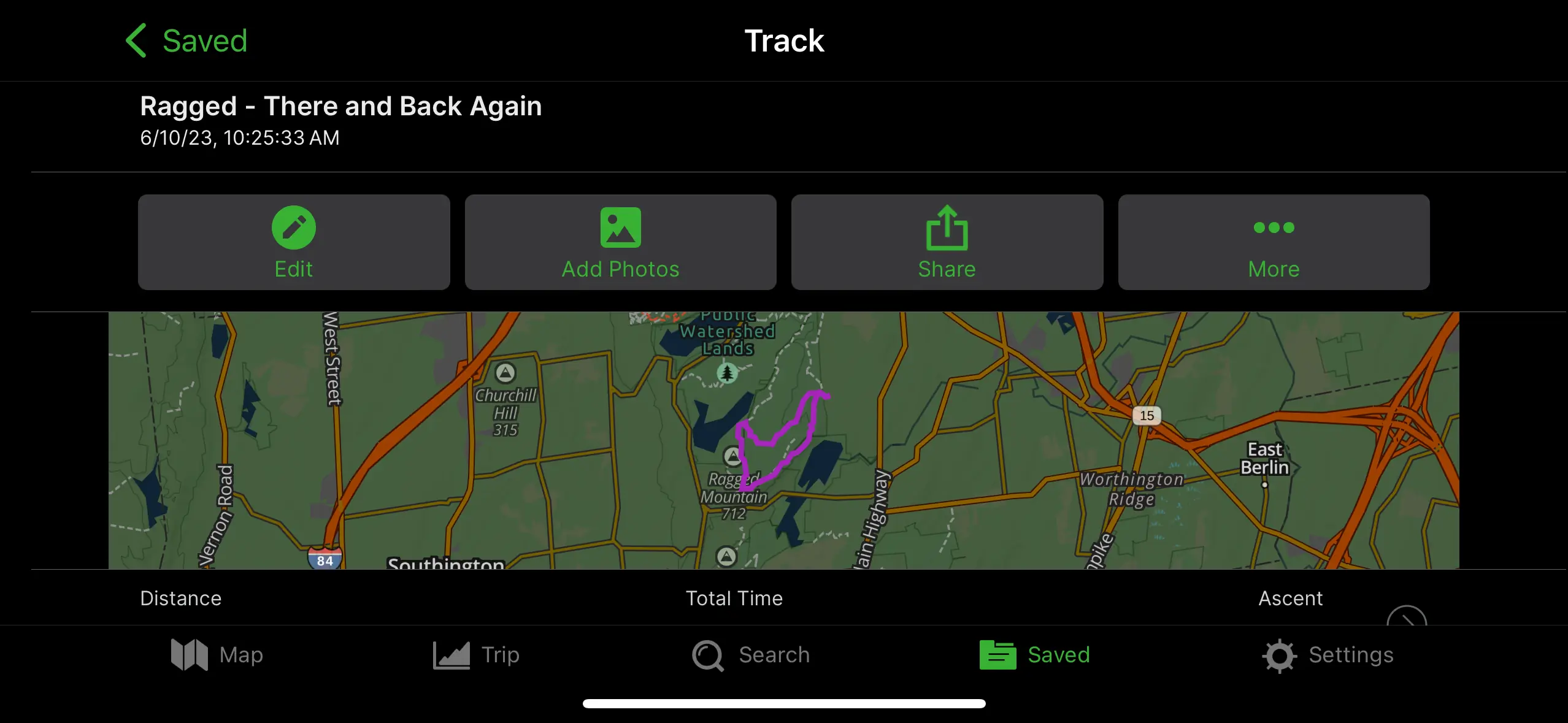



I won’t get into the weeds regarding the process, as it may be different from phone to phone, app to app. But you want to export and import GPX files. These files are native to the eTrex Solar and will work without any issues.
The whole process feels a little old school. But the benefit of it all is that it allows you to get acclimated with your route. Which is something a lot of folks forget to do.
Geocaching With the Garmin Solar
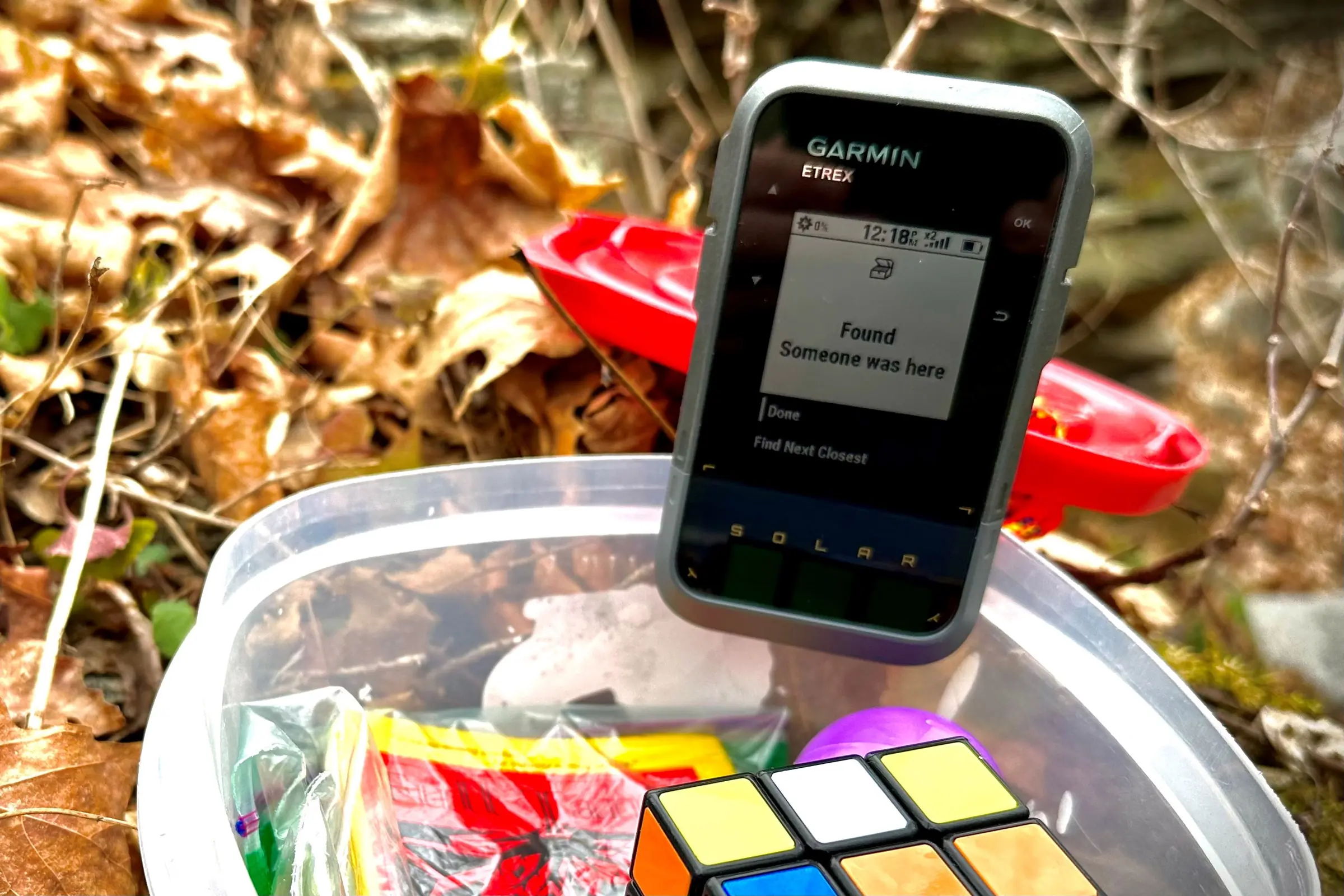



Letterboxing, the task of using physical directions to find hidden containers has been around since the 1800s. But seeing that GPS, as we know it, didn’t exist until the early 1990s, geocaching didn’t catch fire until the early 2000s.
Similar to letterboxing, with geocaching your goal is to find a hidden container. The big difference in geocaching is that you use a GPS unit to find the container. That container will contain a ledger for you to sign, but will more than likely have a treasure for you to take home and replenish.
Geocaching has a massive following and is quite a bit of fun. The containers aren’t generally out in the open — and they’re not only in the woods. In some cases, they could be under rocks, tucked into holes and trees, or lodged in cracks in ledges. In other cases, they can be tethered to storm drains, located under a bench in your favorite restaurant, or in even more complex places where the real diehards like to hide their cache.
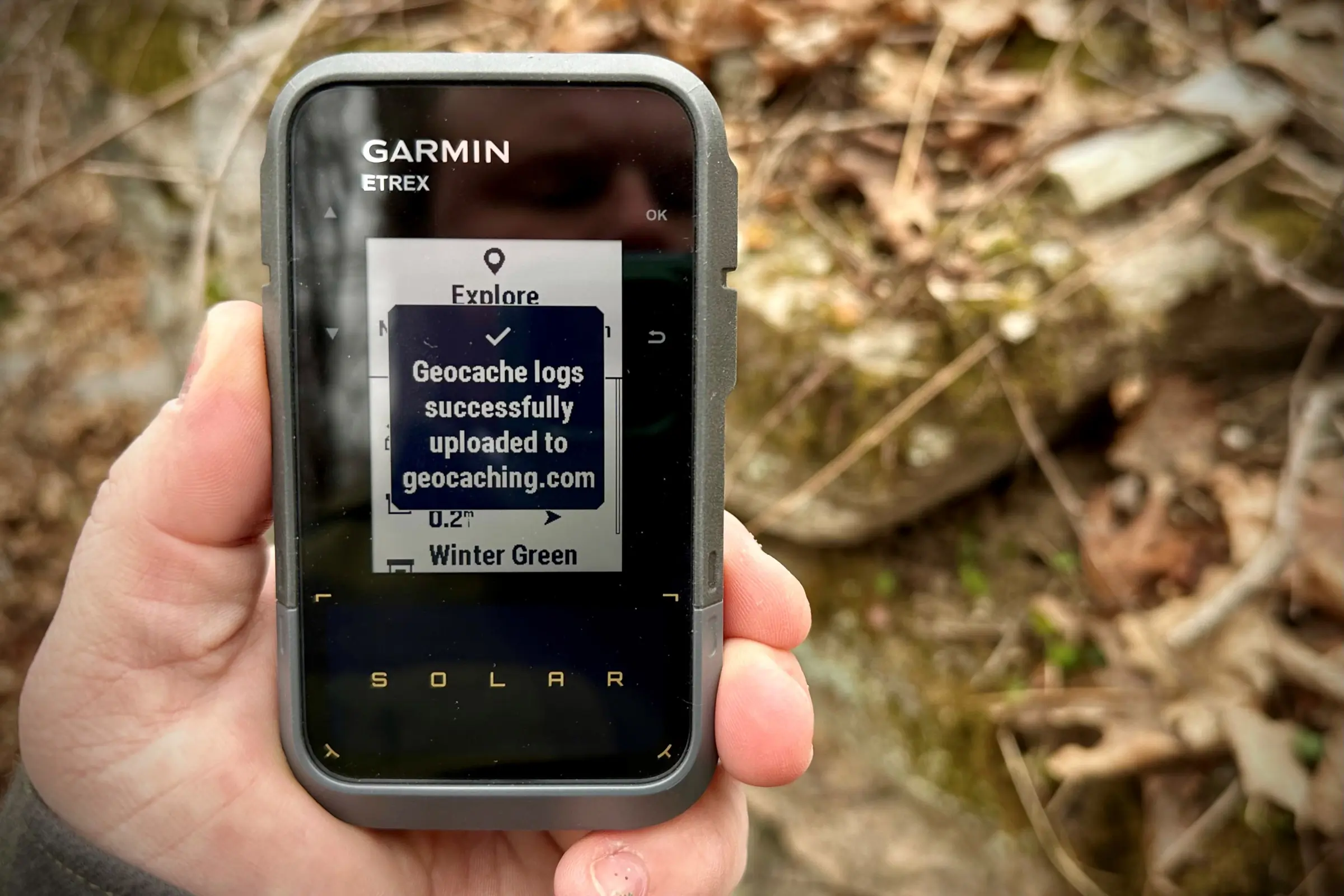



To use the eTrex Solar to geocache, you’ll need to navigate to the geocaching activity on the unit and follow the instructions on the screen. This will require you to register with Geocaching as well as registering the unit with the platform. Geocaching is free to use if you’re a casual geocacher, but there is a premium subscription available if you find yourself obsessed with it. Which tends to happen.
One major benefit of geocaching with the eTrex Solar is that it’s a prime opportunity for the unit to be soaking up the sun. It’s also a ton of fun on your own or with friends and family.
Carry Options
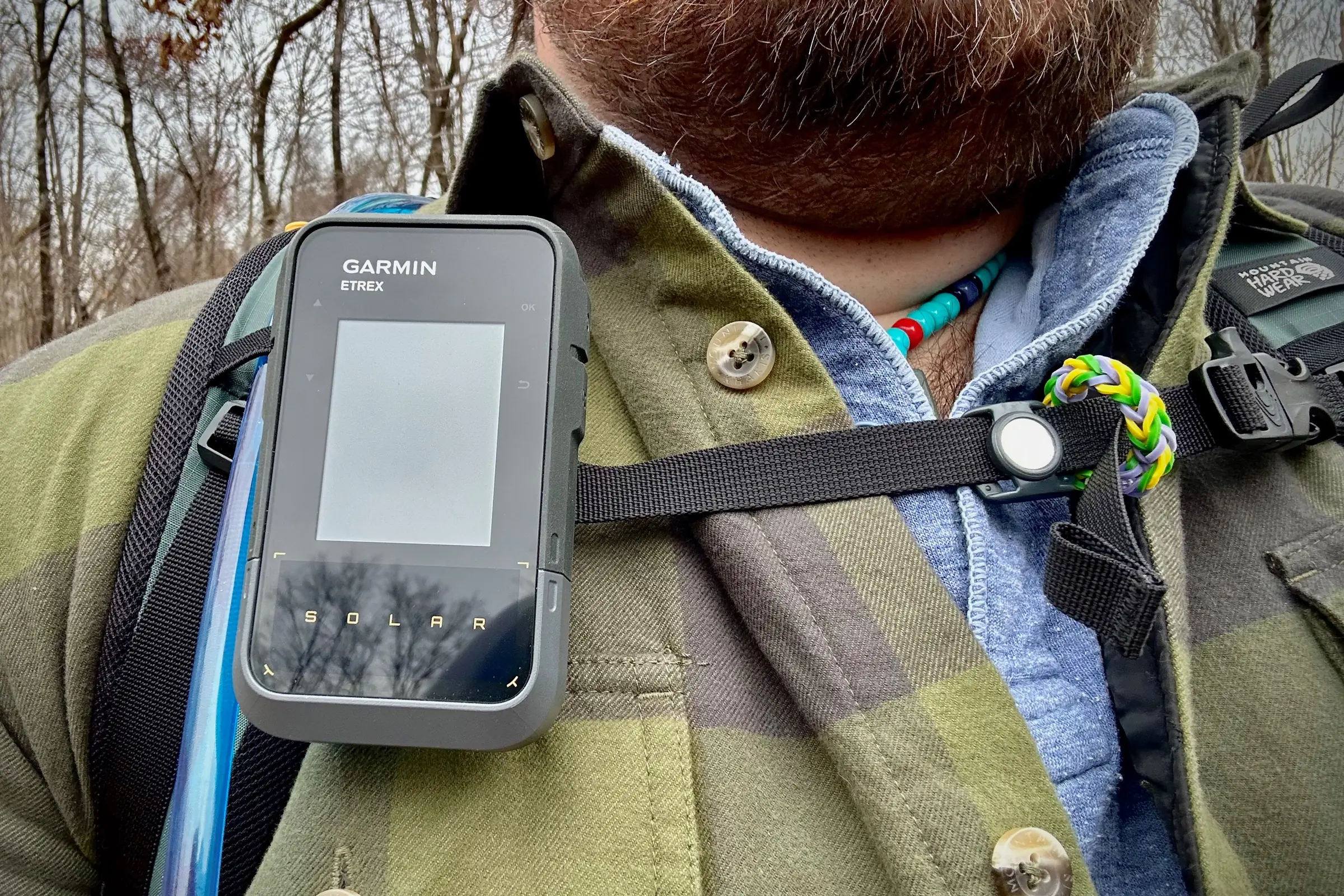



Garmin does a great job of offering carry options for all of their handheld GPS units. From cases to clips, there are almost a dozen ways to carry the eTrex Solar. However, because this unit loves the sun, I would recommend a carry option that keeps it exposed to the sun. It’s important to remember that even when the eTrex Solar is off, it will charge if it’s in the path of sunlight.
I originally considered the Backpack Tether ($21). I soon realized that by design, this option only benefited me when I had my pack on. So I went with the Spine Mount Belt Clip ($10). This clip allows me to use it on my pack, on my belt, on the collar of my shirt or jacket, or anywhere else I could think of carrying the eTrex Solar.
Notifications
I have always been someone who wants to stay in the know. Suffice it to say that whatever watch I have needs to be able to get notifications from my phone. It’s a first-world problem, and my ancestors would beat me senseless if they knew what I’ve become. However, I know I am not alone. None of us really need to have notifications on the eTrex Solar, unless — however — our other devices are tucked away. But even then, I’m not sure how to gauge the benefit against the distraction.
The eTrex Solar is not a touchscreen, which I like, but in terms of notifications, it can make them more of a hassle than they’re worth. There’s no way to swipe away your Ring camera notification telling you that Amazon is at your house while you are 50 miles from nowhere. With the notification taking up one-third of the screen, you need to press a button to remove it if you want to see what you need to on the screen.
I don’t know about you, but when I need to look at the screen of my navigation device, it’s because I am looking for information. Not to be distracted by my social life.
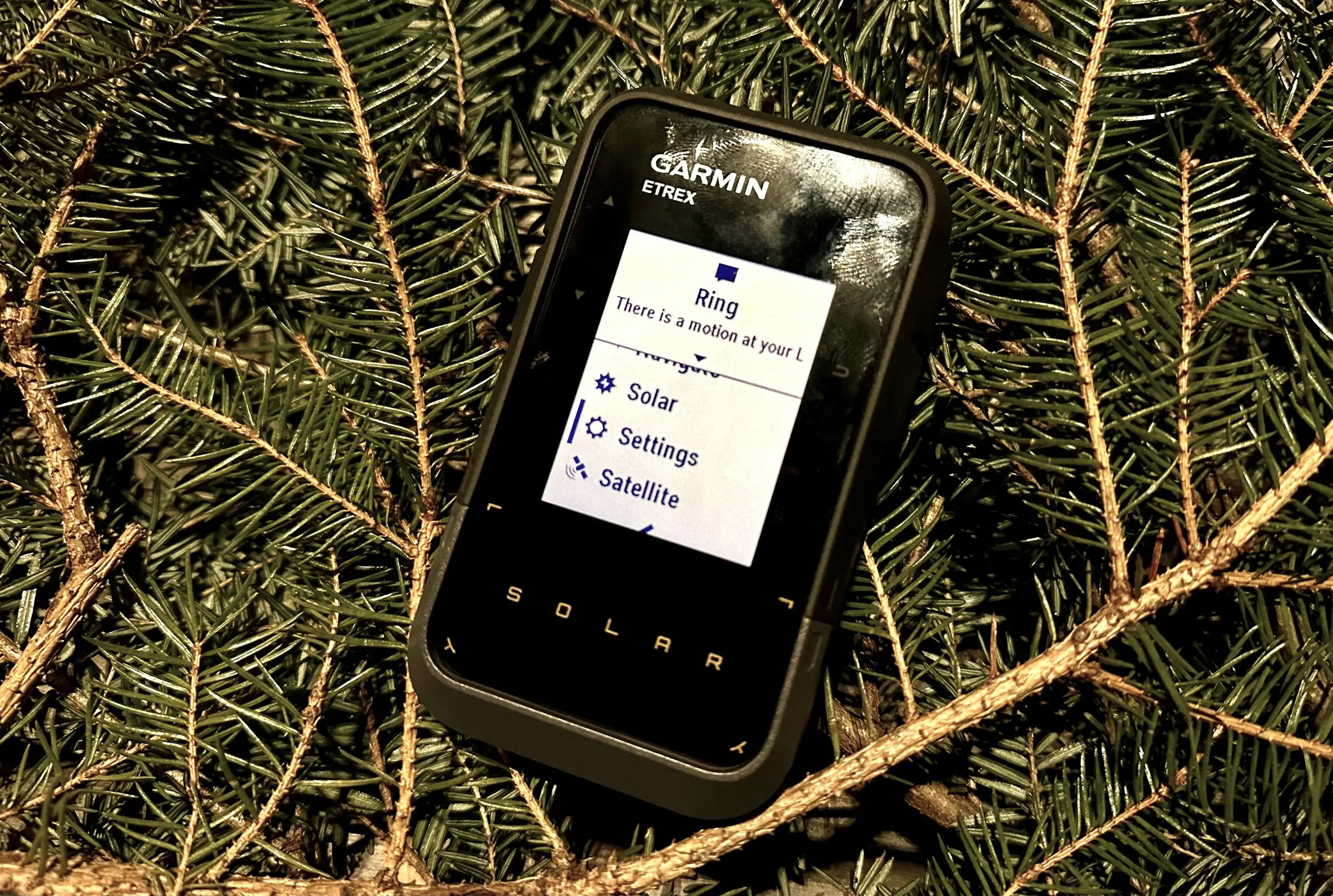



Room for Improvement
For what it is, I think the eTrex Solar is one of the easiest-to-use GPS units out there today. It does an incredible job of keeping things simple and easy to access. When you’re out and about trying to figure it all out, that’s what you want. That said, I wouldn’t mind seeing a couple more features baked into a future version of the eTrex Solar.
The Ability to Charge Other Devices
Being that the battery on the eTrex Solar is limitless, it would be a fantastic addition to be able to charge other electronic devices off of it. It’s not technology that Garmin currently uses in its through-and-through GPS units (though it is featured on the inReach Messenger device), but it would be an excellent addition to a device such as this.
inReach Technology
Garmin already offers this option on a variety of its higher-end devices. I would be willing to drop another hundred on a unit like the eTrex with that technology onboard.
I also think that it’s inevitable that people are going to want a solar option in some of Garmin’s more advanced handheld GPS units. Not to keep picking on the Montana 700i, but that unit is just waiting to get solarized. And it should. Worrying about battery life blows.
Garmin eTrex Solar Review: Conclusion
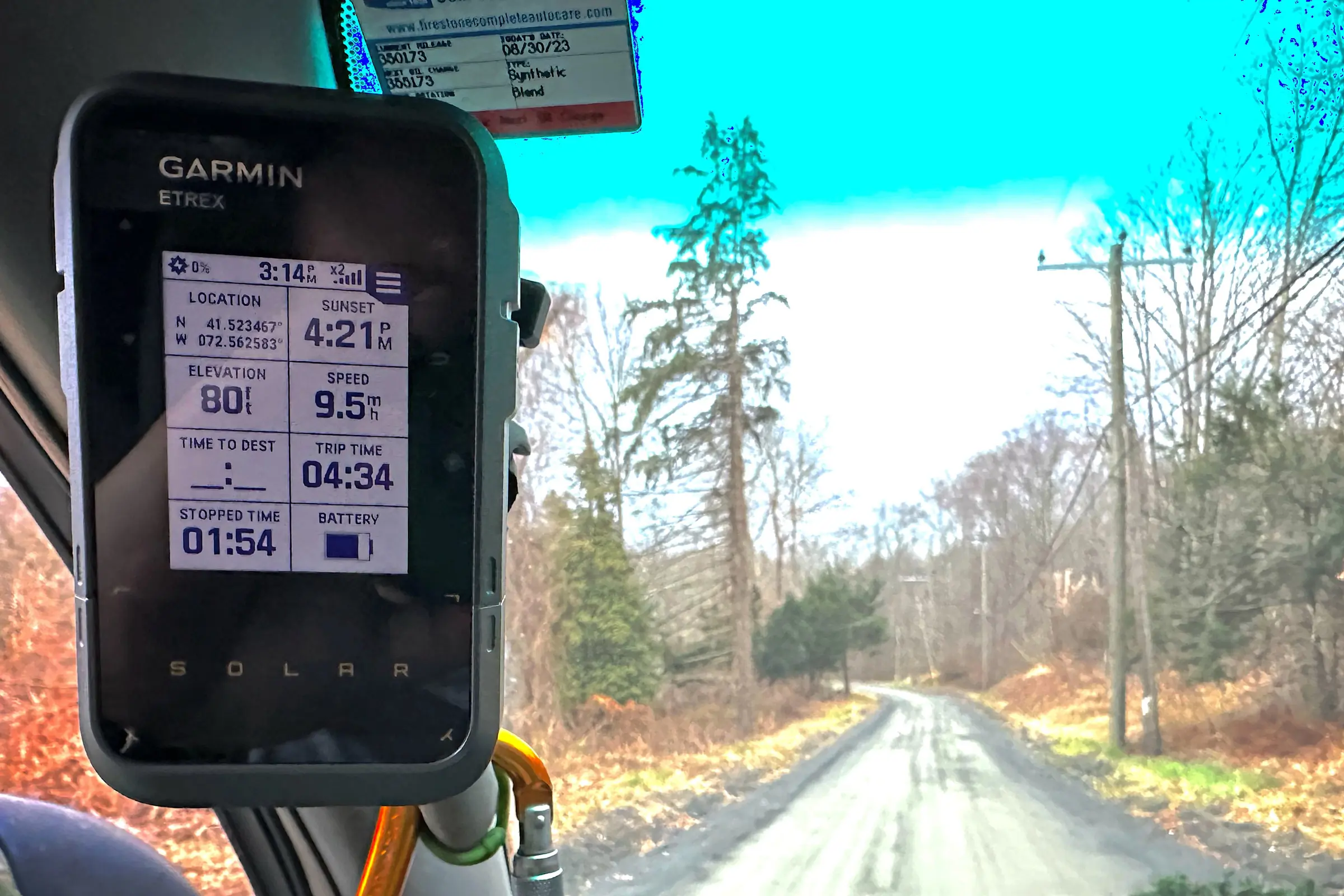



Many moons ago I worked for a large outdoor retailer, and before that, I had been reluctant to get into handheld GPS units in general. But working there — it was unavoidable. As employees, we were able to borrow and test out gear, and I had the opportunity to use a much older eTrex device when I summited Mount Washington.
Reader, I fell in love. It was great to see the route I took compared to how other people had gone up who had used the device before me. But I never found a need to make one a permanent part of my kit. It wasn’t until I moved to where I live now, surrounded by trails located in areas with spotty cell reception, that I saw the need to have one in my pack.
Suffice it to say that I’ve embraced this opportunity with the eTrex Solar. I’ve even used it to map out the more popular routes I take my 4Runner on in the woods. But the big takeaway here is that you get out what you put in with the eTrex Solar. It’s up to you to add the waypoints and populate the base map. It’s easy to do, it just requires pre-planning on your part.
So, if you’re someone who likes to go on outdoor adventures — of all shapes and sizes — I would suggest that you consider the Garmin eTrex Solar. With what you’re getting for $250, you won’t miss the turn-by-turn directions or color screen. You will, however, enjoy the ease of use in going through the menus and using the tracking and waypoint features.
You’ll also enjoy the pinpoint accuracy and the fact that you don’t need to worry about charging it. Just stick the unit in the sun when you’re out and about.
All in all, I hope this review eliminates some of the confusion and chit-chat about the eTrex Solar. I don’t believe that Garmin ever alluded to being anything more than the innovative hiking GPS handheld device that it is. People get wrapped up in the wrong things, and it ends up catching fire and causing distractions. In terms of handheld GPS units, the eTrex Solar will be the best $250 you’ll ever spend.
